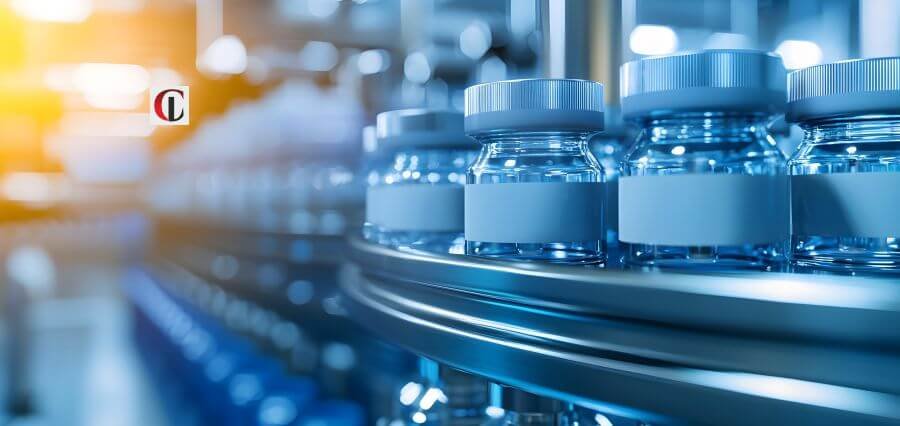In chemical process manufacturing, safety protocols are the most important thing. Chemical processes and products are a vital part of modern life and play a very important role in pharmaceuticals, petrochemicals, and food industries. However, improper handling or use of chemicals may cause severe accidents, injuries, and even fatalities. Thus, safety in chemical processes and products is of utmost importance to protect workers, the environment, and the public.
Understanding Process Safety
Process safety is understanding hazards and risks, managing risks through the provision of appropriate layers of protection to minimize the frequency and severity of incidents, and learning from incidents when they occur. It involves identifying and understanding potential hazards, assessing consequences, safeguards, and risks, and then adding layers of protection to prevent or mitigate incidents. These safeguards protect students, staff, faculty, the public, the environment, and property.
A good solid Safety Management System (SMS) is the platform of safe production of chemicals. A good and effective SMS needs hazard identification or risk assessment including the implementation of control measures at appropriate stages to prevent accidents regularly. As asserted by OSHA, the Hazards Identification or Risk Assessment successfully implemented will likely reduce injuries of the employees while working at sites by up to 25%.
Basic Building Blocks of Safe Chemical Production
There are several key elements to ensure that chemical manufacturing process safety is undertaken, including Hazard Identification and Risk Assessment (HIRA). This identifies and assesses the risk often enough and prevents accidents; and a well-implemented HIRA can remarkably reduce workplace injuries. Start with identifying potential hazards that could arise during the chemical process or product development, including chemical reactions and fires, explosions, and exposure to hazardous substances.
Assess the likelihood and severity of each hazard, taking into account the amount and concentration of chemicals used, the temperature and pressure of the process, and the possibility of human error. Identify who might be harmed by each hazard, including workers involved in the process, nearby residents or communities, or the environment.
- SOPs: Specific, detailed SOPs ensure a uniformity in operations and also safety practices. SOPs shall be reviewed for periodic updates where there are variations in processes or regulations.
- Engineering Controls: Such controls involve engineering changes to any equipment or the process that is done to control or eliminate any hazard. Administrative controls or even PPE normally are not nearly as reliable as these controls. Examples include ventilation systems, which greatly reduce the concentration of airborne contaminants, and containment and isolation methods, which avoid exposure. The European Agency for Safety and Health at Work (EU-OSHA) says that proper containment can cut down exposure to dangerous chemicals by as much as 73%. Automated systems also can minimize human exposure to hazardous processes.
- Administrative Controls: The administrative controls consist of safe lab procedures, chemical hygiene plans, job safety analysis, management of change, and safe work practices.
- Behavioral Controls: The behavioral controls consist of personal protective equipment (PPE), right tools, use of stop-work authority, and following lab procedures.
- Personal Protective Equipment: The provision of appropriate safety equipment is essential in protecting employees. This may be personal protective equipment such as gloves, goggles, respirators, and protective clothing. Ensure the employees know how to use and maintain the equipment properly.
- Emergency Preparedness and Response: Emergency preparedness is crucial in reducing the effects of a chemical accident. An effective response to an emergency saves lives and minimizes damage. Key aspects of emergency preparedness include elaborative plans stating what to do in case of a chemical spill, fire, or explosion.
Installation and Maintaining Safety Standards
For chemical processes and products to remain safe, implementation and maintenance of safety standards with respect to storing and using chemicals are essential, involving the following steps:
- Control and Mitigation Measures: Developing controls and measures to mitigate these hazards based on their likelihood and severity. In most cases, these controls involve engineering controls or administrative controls while, in certain situations, using personal protective equipment may be indispensable.
- Implement the Controls and Mitigation Measures: Once the controls and mitigation measures have been developed, they should be implemented in the chemical process or product development. This will involve changing equipment or procedures or providing employees with appropriate personal protective equipment.
- Train Employees All employees who may come into contact with chemical processes or chemical product should be given the appropriate education about safety practices and procedures. Such training includes teaching employees on the use of personal protective equipment, how to react in an emergency, and proper handling of hazardous materials.
- Regular Review and Update of Safety Protocols: The safety protocols and controls should be regularly reviewed and updated to ensure they remain effective and relevant. This may involve conducting periodic audits or inspections of the process to identify any potential issues.
- Document the outcome of the risk assessment, indicating hazards identified, the likelihood of the hazard happening, and severity in case of the hazard. It also gives details on the controls and measures that have been taken to minimize the risk involved with the injury.
- Review and Update the Risk Assessment Regularly: Review and update the risk assessment regularly to ensure it remains relevant and effective as conditions change, such as changes in chemicals used or modifications to the process.
Continuous Improvement
Process Safety Management System aims for excellence by way of continuous improvement and employee involvement in the safe operation of plants. Implementing appropriate safety protocols and controls helps minimize harm to employees, the nearby community, and the environment. Being up-to-date and implementing best practices and constant improvements in safety will make a place safer to work in.

